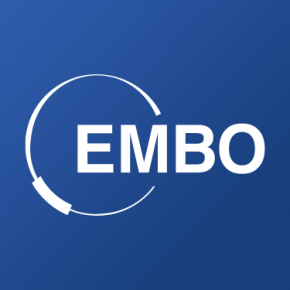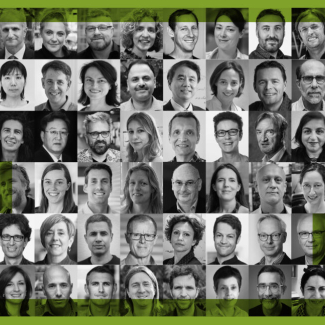Six biologistes du CNRS élus membres de l'EMBO
Le 6 juillet 2022, 67 scientifiques de renom ont été élus membre de l'European Molecular Biology Organization (EMBO), en reconnaissance de leurs remarquables réalisations dans le domaine des sciences de la vie.
Six biologistes du CNRS figurent parmi les personnalités distinguées.
La tradition de l'EMBO de reconnaître en tant que membre des biologistes de renom remonte à 1963, lorsqu'un premier groupe de 150 membres a été sélectionné par le Conseil de l'EMBO. Depuis lors, les membres de l'EMBO ont été invités à nommer et à élire des scientifiques exceptionnel.le.s pour rejoindre la communauté, qui compte aujourd'hui plus de 1 800 membres et membres associé.e.s. Les élections des membres de l'EMBO ont lieu chaque année. Les nouveaux membres de l'EMBO rejoignent une liste de scientifiques de renom élus avant eux, qui comprend 88 lauréat.e.s du prix Nobel.
Source : embo.org

Institut Jacques Monod (IJM)
CNRS/Université Paris Cité
Evolution and genetics
Our team examines how Drosophila species have evolved, to better understand the mechanisms of evolution. We currently study the evolution of bioadhesives produced by Drosophila flies. With Arnaud Martin I maintain www.gephebase.org, a database of the genes known to contribute to natural phenotypic differences in plants and animals. I also work on philosophy of biology, SARS-CoV-2 origin and the risks associated with gene drive biotechnology.

Reproduction et développement des plantes (RDP)
CNRS / ENS Lyon / INRAE
© EMBO
Inter-tissue communication in plant reproduction
My group is interested in paracrine communication mechanisms that allow the coordinated development of plant reproductive organs (seeds and anthers). We use integrative and multidisciplinary approaches to address how modifications of the extracellular matrix are triggered by, and subsequently control, mechanically mediated, peptide mediated, and metabolic communication between physically conjoined but cytoplasmically isolated tissues.

Institut Pasteur
© EMBO
Functional organization of chromosomes
Our research is driven by long-standing interests in chromosome folding, dynamics and functional processes. We mainly focus on budding yeast, but also investigate species from all domains of life through complementary approaches, including large synthetic DNA molecules designed in silico. In parallel, we develop and apply computational techniques derived from the Hi-C technique, aiming at improving genome assembly and metagenomic analysis.

Institut Jacques Monod (IJM)
CNRS / Université Paris Cité
© EMBO
Cell and tissue mechanobiology
My research combines experimental biophysics and soft condensed matter to study the mechanobiology of cells and tissues, with a focus on cell migration and cell extrusion. My most important contributions are in the fields of cell rigidity and geometry sensing, wound healing and active matter and its applications to cell extrusion, collective migration and tissue organization.

Institut de Biologie du Développement de Marseille (IBDM)
Aix-Marseille Université / CNRS
© EMBO
Biomechanics of muscle and sarcomere morphogenesis
My group is investigating the mechanobiology of muscle. We combine genetics with imaging and quantitative biophysical methods to study the mechanisms how muscles assemble their contractile sarcomeres and how these sarcomeres are serviced to remain functional throughout life. Sarcomeres are amongst the largest protein assemblies in animals; they produce high forces and mechanically link to the skeleton, to power animal movement.

Unité de biologie moléculaire, cellulaire et du développement (MCD)
CNRS / Université Toulouse - Paul Sabatier
© EMBO
Morphogenesis driven by cell extrusion mechanics
Our lab revealed, through cellular and biophysical studies (1) that apoptotic cells, far from being passively eliminated, actively participate in morphogenesis, through the formation of a contractile actomyosin structure that links the apical surface to the apoptotic nucleus, thus ensuring apoptotic force propagation; and (2) that cells undergoing EMT, generate a surprisingly similar apico-basal force, and contribute mechanically to morphogenesis.

